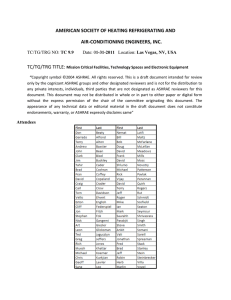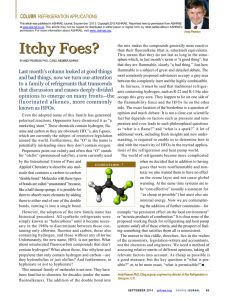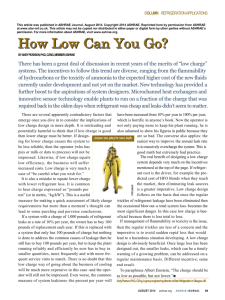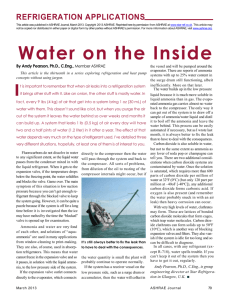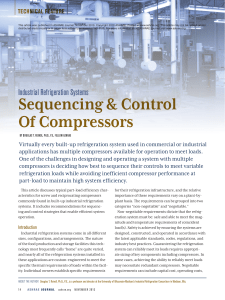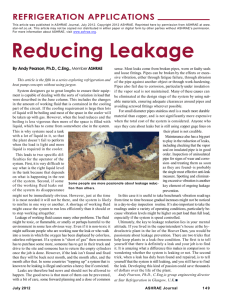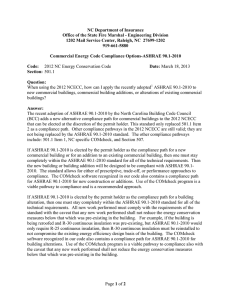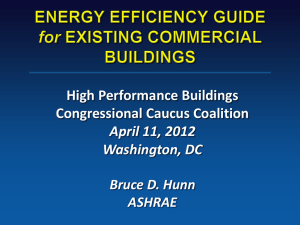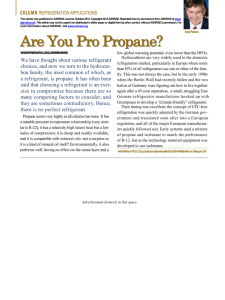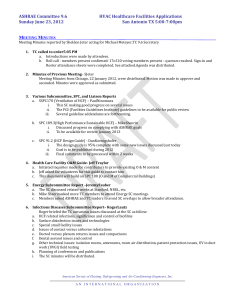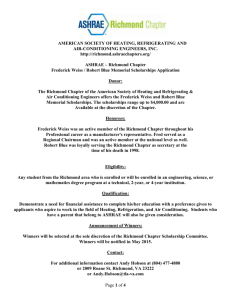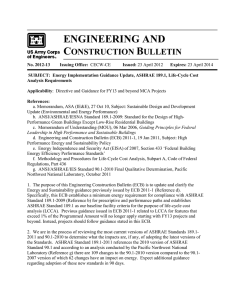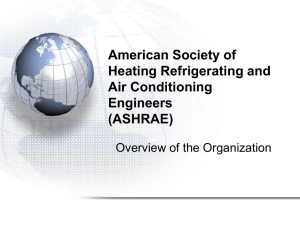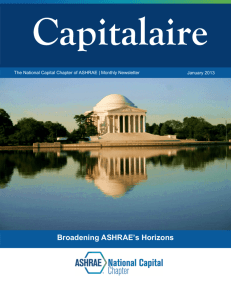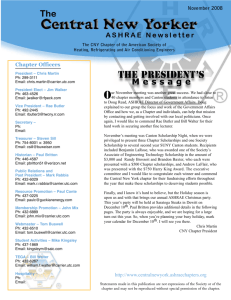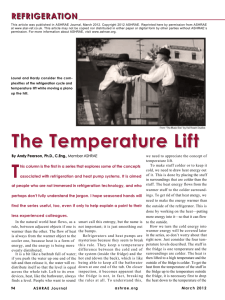66 ASHRAE JOURNAL ashrae.org AUGUST 2015 Andy Pearson
advertisement
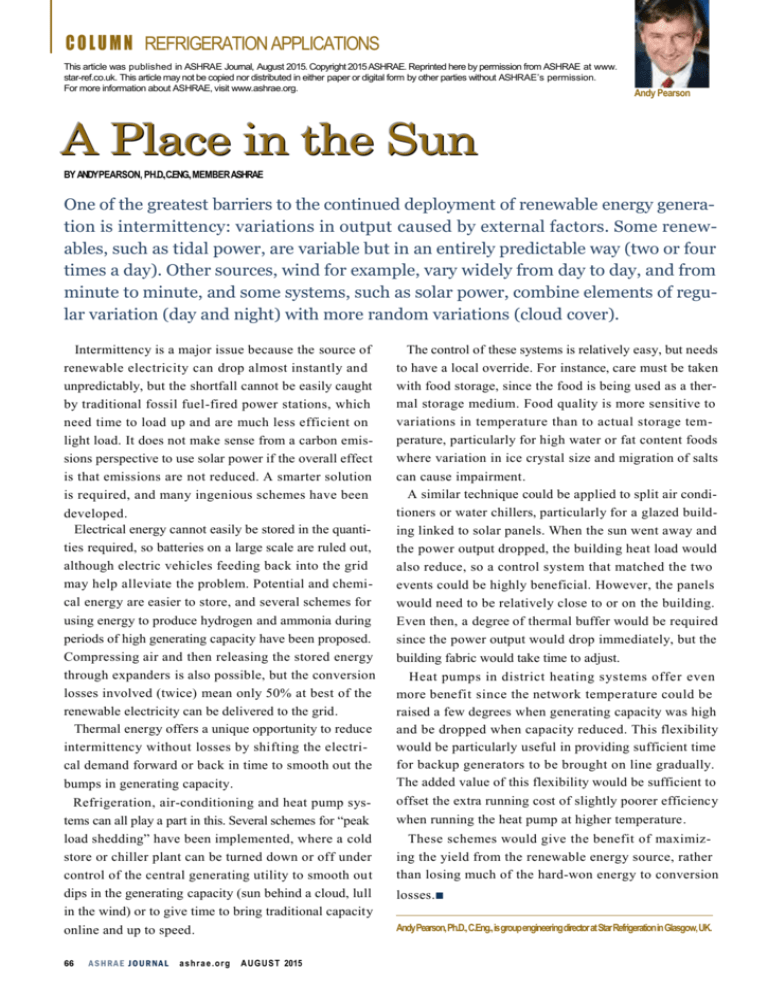
C O L U M N REFRIGERATION APPLICATIONS This article was published in ASHRAE Journal, August 2015. Copyright 2015 ASHRAE. Reprinted here by permission from ASHRAE at www. star-ref.co.uk. This article may not be copied nor distributed in either paper or digital form by other parties without ASHRAE’s permission. For more information about ASHRAE, visit www.ashrae.org. Andy Pearson A Place in the Sun BY ANDYPEARSON, PH.D.,C.ENG., MEMBER ASHRAE One of the greatest barriers to the continued deployment of renewable energy generation is intermittency: variations in output caused by external factors. Some renewables, such as tidal power, are variable but in an entirely predictable way (two or four times a day). Other sources, wind for example, vary widely from day to day, and from minute to minute, and some systems, such as solar power, combine elements of regular variation (day and night) with more random variations (cloud cover). Intermittency is a major issue because the source of renewable electricity can drop almost instantly and unpredictably, but the shortfall cannot be easily caught by traditional fossil fuel-fired power stations, which need time to load up and are much less efficient on light load. It does not make sense from a carbon emissions perspective to use solar power if the overall effect is that emissions are not reduced. A smarter solution is required, and many ingenious schemes have been developed. Electrical energy cannot easily be stored in the quantities required, so batteries on a large scale are ruled out, although electric vehicles feeding back into the grid may help alleviate the problem. Potential and chemical energy are easier to store, and several schemes for using energy to produce hydrogen and ammonia during periods of high generating capacity have been proposed. Compressing air and then releasing the stored energy through expanders is also possible, but the conversion losses involved (twice) mean only 50% at best of the renewable electricity can be delivered to the grid. Thermal energy offers a unique opportunity to reduce intermittency without losses by shifting the electrical demand forward or back in time to smooth out the bumps in generating capacity. Refrigeration, air-conditioning and heat pump systems can all play a part in this. Several schemes for “peak load shedding” have been implemented, where a cold store or chiller plant can be turned down or off under control of the central generating utility to smooth out dips in the generating capacity (sun behind a cloud, lull in the wind) or to give time to bring traditional capacity online and up to speed. 66 ASHRAE JOURNAL a s h r a e .o r g A U G U S T 2015 The control of these systems is relatively easy, but needs to have a local override. For instance, care must be taken with food storage, since the food is being used as a thermal storage medium. Food quality is more sensitive to variations in temperature than to actual storage temperature, particularly for high water or fat content foods where variation in ice crystal size and migration of salts can cause impairment. A similar technique could be applied to split air conditioners or water chillers, particularly for a glazed building linked to solar panels. When the sun went away and the power output dropped, the building heat load would also reduce, so a control system that matched the two events could be highly beneficial. However, the panels would need to be relatively close to or on the building. Even then, a degree of thermal buffer would be required since the power output would drop immediately, but the building fabric would take time to adjust. Heat pumps in district heating systems offer even more benefit since the network temperature could be raised a few degrees when generating capacity was high and be dropped when capacity reduced. This flexibility would be particularly useful in providing sufficient time for backup generators to be brought on line gradually. The added value of this flexibility would be sufficient to offset the extra running cost of slightly poorer efficiency when running the heat pump at higher temperature. These schemes would give the benefit of maximizing the yield from the renewable energy source, rather than losing much of the hard-won energy to conversion losses.■ AndyPearson, Ph.D., C.Eng., is group engineering director at Star Refrigeration in Glasgow, UK.


